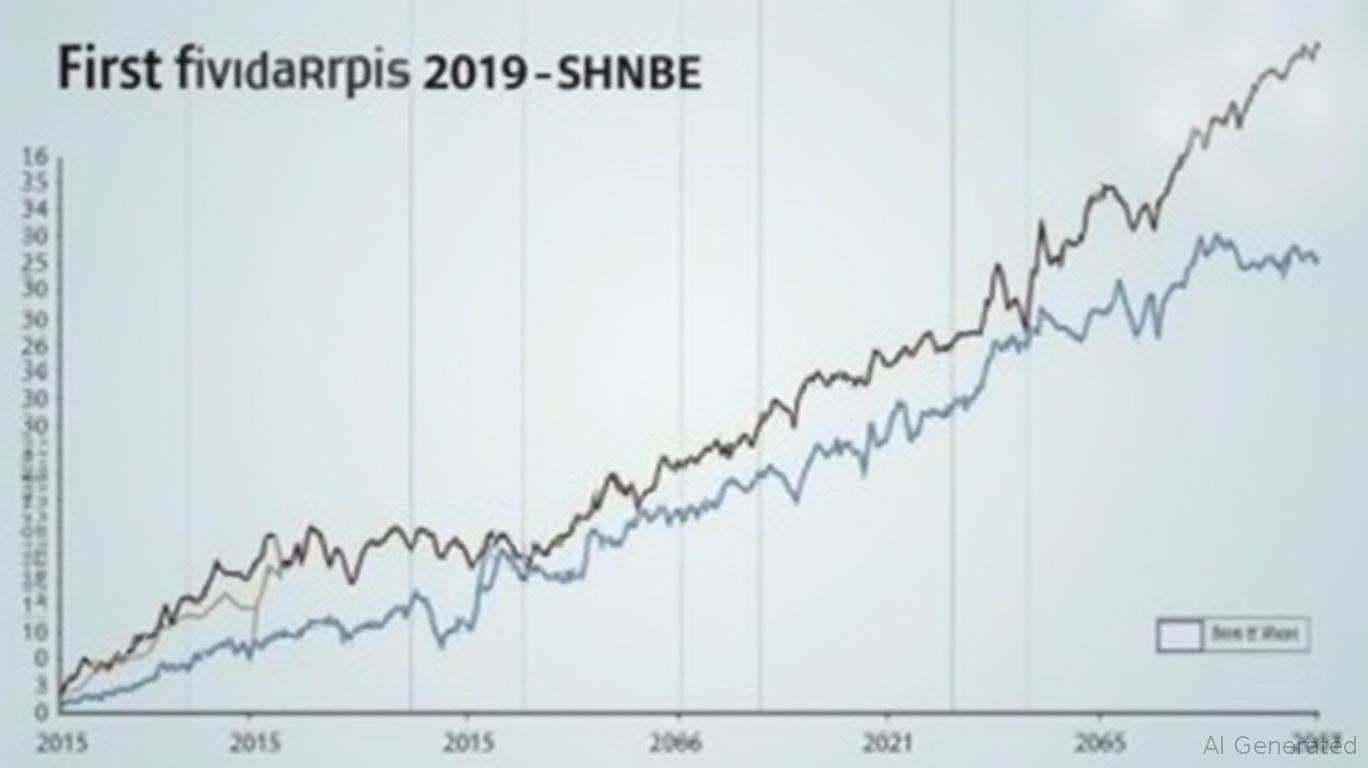First Bancorp's Dividend Resurgence: A Balancing Act Between Past Reliability and Future Growth
First Bancorp (NASDAQ:FBNC) has long been a dividend stalwart in the regional banking sector, but its recent trajectory raises critical questions: Can its 11% compound annual growth rate (CAGR) in dividends over the past decade sustain momentum? And does its projected 29% EPS growth in 2025 justify its current 2.2% dividend yield?
The answer lies in dissecting the company's historical performance, payout discipline, and the macroeconomic forces shaping its future. While the dividend increase to $0.23 per share signals resilience, investors must weigh this against lingering concerns over past earnings volatility and the broader financial sector's yield landscape.
A Decade of Dividend Discipline, With Hiccups
First Bancorp's dividend track record is enviable: a 11% CAGR since 2013, driven by consistent quarterly payments and strategic raises. The most notable leap came in 2020, when the dividend jumped 50% to $0.18 per share—a bold move during the pandemic. However, this growth wasn't without turbulence. In 2021, the dividend dipped to $0.20 before rebounding to $0.22 in 2022 and settling at $0.23 in 2025.

The key metric here is the payout ratio, which dropped to 37% in 2025 from 42% historically. This reduction suggests management is prioritizing earnings retention over immediate shareholder returns—a prudent move given its projected 29% EPS growth next year. Yet, skeptics might argue that past earnings declines (a 6.7% annual drop over five years) could undermine this optimism.
The 29% EPS Growth Catalyst: Real or Illusory?
The projected 29% EPS rise hinges on margin expansion, asset mix improvements, and operational leverage, as noted in recent earnings calls. If realized, this would mark a dramatic reversal from years of stagnation. But investors should scrutinize the sustainability of this growth.
Critically, the 29% figure is a forward-looking estimate. To justify it, the bank must demonstrate consistent revenue streams from its core lending businesses and effective cost management. A payout ratio of 37% leaves room for growth, but any earnings shortfall could force a reset in dividend expectations.
2.2% Yield: Competitive in a Sector of Contrasts
First Bancorp's current dividend yield of 2.2% sits below the financial sector's average of 3.77%, but above some regional peers. For context:
- Synovus Financial (SNV) and Webster Financial (WBS) offer yields of 3.15% and 3.03%, respectively.
- Western Alliance Bancorp (WAL), meanwhile, yields 1.91%, underscoring sector variability.
The yield gap isn't cause for alarm. First Bancorp's focus on prudent risk management—its non-performing loans remain low at 0.7%—supports its stability. However, investors seeking higher income may find better options elsewhere. The 2.2% yield is reasonable for a bank with a proven dividend track record, but it's not a standout in a sector offering higher payouts.
Red Flags: Earnings Volatility and External Risks
While the dividend increase is a positive signal, two factors warrant caution:
Historical Earnings Decline: First Bancorp's EPS fell 6.7% annually over five years before 2025. A single year of growth won't erase this trend. Investors should demand at least two consecutive quarters of robust EPS expansion to confirm durability.
Interest Rate and Economic Risks: Regional banks are sensitive to rate cycles. A prolonged downturn in commercial lending or rising credit defaults could squeeze margins. First Bancorp's exposure to real estate and small-business loans amplifies this risk.
Investment Takeaway: A Hold for Now, but Watch Closely
First Bancorp's dividend raise to $0.23 per share is a positive step, reflecting management's confidence in its business model. The 11% dividend CAGR and 37% payout ratio suggest a sustainable path forward—if earnings recover as projected.
However, the jury is still out on whether the 29% EPS growth can materialize and persist. Until we see at least two quarters of strong performance, caution is warranted.
Action Items for Investors:
- Monitor Q2 and Q3 2025 EPS results closely.
- Track the bank's net interest margin and loan growth metrics.
- Compare its yield and growth profile to peers like SNV and WBS, which offer higher payouts with similar risk profiles.
Historical backtests of this strategy reveal significant risks: such a trading approach would have generated a maximum drawdown of -43.52% and an excess return of -49.07% between 2020 and 2025, underscoring the difficulty of timing earnings-driven trades.
In conclusion, First Bancorp's dividend is a testament to its past reliability, but its future hinges on delivering on aggressive EPS growth. For now, it's a hold—worth watching but not yet a must-buy.

Comments
No comments yet